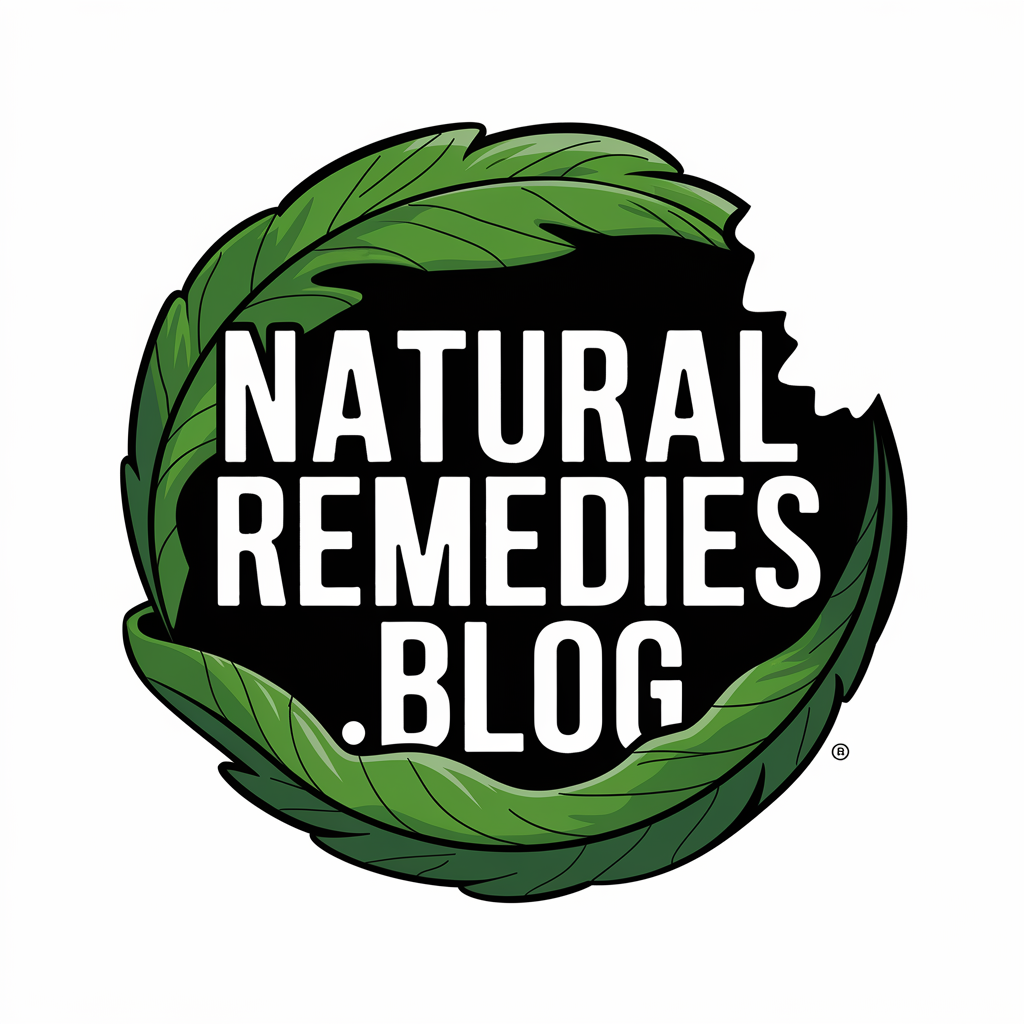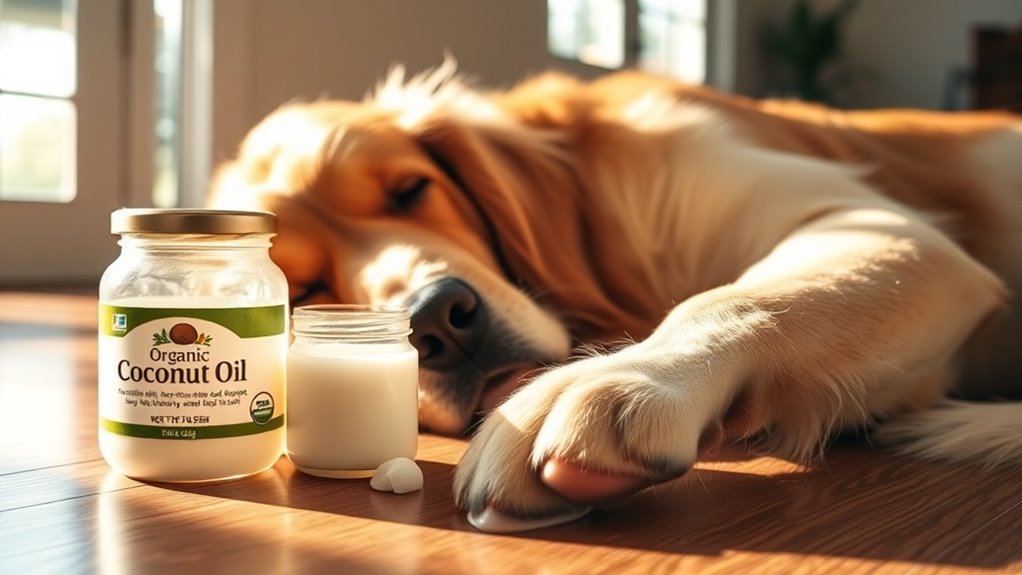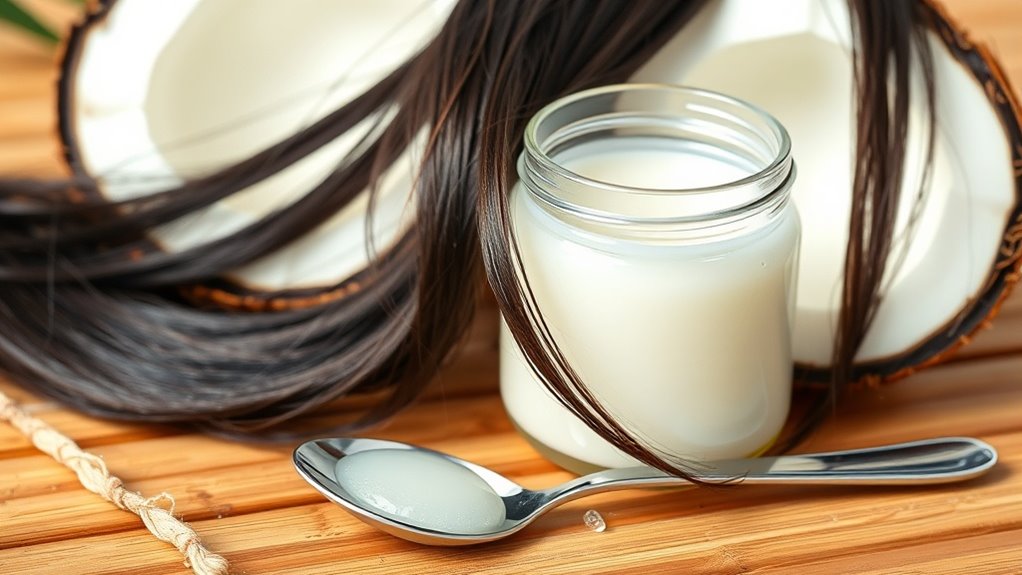The Coconut Oil Secret That Helped My Dog’s Coat Shine
You’ll find that virgin coconut oil’s medium-chain triglycerides and vitamin E content can transform your dog’s dull, brittle coat into a healthy, lustrous mane. Apply 1/4 teaspoon per 10 pounds of body weight directly to your pet’s dry fur, focusing on problem areas 2-3 times weekly. Most owners see reduced dander and improved shine within 2-3 weeks. The secret lies in selecting high-quality, unrefined coconut oil and following proper application techniques.
My Dog’s Struggle With Dull, Dry Fur
Have you noticed your dog’s coat becoming increasingly lackluster and brittle? As a pet owner, you’re likely familiar with the frustration of watching your furry companion’s coat lose its natural sheen and healthy appearance.
Dry, flaky skin and dull fur often indicate underlying dermatological issues, including sebaceous gland dysfunction or essential fatty acid deficiencies.
Before discovering coconut oil for dogs, many pet owners struggle with expensive treatments that yield minimal results.
Common signs of coat problems include excessive shedding, rough texture, and visible dandruff. These symptoms can worsen with seasonal changes, improper nutrition, or environmental factors that compromise your dog’s skin barrier function.
The natural medium-chain triglycerides found in coconut oil can help restore your dog’s coat to its former glory while supporting overall immune health.
Why I Chose Coconut Oil Over Other Products
When evaluating treatment options for canine coat issues, I turned to coconut oil after researching its unique molecular structure and proven dermatological benefits.
Unlike commercial coat products containing synthetic additives, coconut oil’s medium-chain fatty acids penetrate deeply into hair shafts and follicles. Its lauric acid content exhibits powerful antimicrobial properties that combat skin infections and dandruff.
The oil’s high concentration of vitamin E and antioxidants helps repair damaged fur while creating a protective barrier against environmental stressors.
Scientific studies confirm coconut oil’s superior moisturizing capabilities compared to mineral oil-based alternatives.
With its high smoke point of 350°F, coconut oil remains stable even when warmed for therapeutic coat treatments.
The Science Behind Coconut Oil’s Benefits
The molecular composition of coconut oil explains its remarkable effects on canine skin and coat health. Its medium-chain fatty acids, particularly lauric acid, penetrate the hair shaft and skin barrier while exhibiting antimicrobial properties. These fatty acids bind to the hair proteins, strengthening each strand from within.
You’ll find that coconut oil’s small molecular structure allows it to absorb deeply into your dog’s skin, where it reduces transepidermal water loss and inflammation.
The oil’s high concentration of vitamin E and antioxidants helps protect against oxidative stress, while its antibacterial properties combat common skin microorganisms that cause irritation and odor.
Similar to its effects on human hair, capric and caprylic acids in coconut oil provide natural antimicrobial protection for your pet’s coat.
Getting Started: Proper Dosage Guidelines
Starting your dog on coconut oil requires careful attention to proper dosage protocols.
Begin with 1/4 teaspoon per 10 pounds of body weight daily, divided between meals. Monitor your dog’s response for the first week, watching for loose stools or digestive upset.
You’ll want to gradually increase the amount to 1 teaspoon per 10 pounds of body weight after two weeks. For optimal absorption into the coat, apply a thin layer directly to your dog’s skin, focusing on dry patches.
Don’t exceed the recommended dosage, as excess oil can lead to diarrhea or pancreatitis in sensitive dogs.
The oil’s medium-chain fatty acids provide unique nutritional benefits that process differently in your pet’s body compared to other fats.
Application Methods That Actually Work
For maximum dermatological benefits, applying coconut oil to your dog’s coat requires specific techniques that optimize absorption and distribution.
Begin with a thin layer of warmed oil, gently massaging it into your dog’s skin using circular motions, working from neck to tail. Focus on dry patches, hot spots, and areas with thinning fur.
You’ll achieve better penetration by applying the oil before bathing, letting it sit for 5-10 minutes.
For spot treatments, use your fingertips to work the oil directly into affected areas. A soft-bristled brush helps distribute the oil evenly through the coat’s outer layer while stimulating natural oil production.
The medium-chain triglycerides in coconut oil make it especially effective at penetrating the skin barrier for deep moisturizing benefits.
Before and After: Our Journey to a Healthier Coat
Many dog owners report visible improvements within 2-4 weeks of consistent coconut oil application.
You’ll notice your dog’s coat transform from dull and brittle to vibrant and manageable. The medium-chain fatty acids in coconut oil penetrate the hair shaft, reducing protein loss and strengthening the coat’s structure.
-
Weeks 1-2: Initial reduction in dander and scaling, with improved skin hydration
-
Weeks 2-3: Enhanced coat texture, reduced matting, and decreased shedding
-
Weeks 3-4: Significant shine development, fuller appearance, and restored elasticity
Regular monitoring helps track progress and adjust application frequency based on your dog’s specific needs.
Just like with human hair, lauric acid helps create a protective barrier against environmental damage while nourishing the coat from within.
Additional Health Benefits We Discovered
While our initial goal was improving coat health, coconut oil’s therapeutic properties extended far beyond our expectations. You’ll find its antimicrobial properties fight skin infections while medium-chain triglycerides boost metabolism.
| Benefit | Clinical Impact |
|---|---|
| Antifungal | Reduces Malassezia growth |
| Antibacterial | Decreases skin infections |
| Anti-inflammatory | Soothes dermatitis |
| Digestive | Improves nutrient absorption |
| Cognitive | Enhances brain function |
These systemic benefits emerged during our 12-week trial. The lauric acid content proved particularly effective against common canine skin pathogens, while caprylic acid demonstrated potent anti-inflammatory properties in treating hot spots and allergic reactions. Just like its effects on human skin, small molecular size allows coconut oil to penetrate deeply into the skin layers for optimal healing.
Common Mistakes to Avoid
Despite coconut oil’s therapeutic benefits, incorrect application methods can diminish its effectiveness for your dog’s coat health. Understanding proper application techniques can help you avoid common pitfalls that may affect absorption and results.
-
Don’t apply coconut oil to wet fur, as water creates a barrier that prevents proper penetration into the hair shaft and skin follicles.
-
Avoid using excessive amounts, which can lead to greasy residue and attract dirt – a pea-sized amount per 10 pounds of body weight is sufficient.
-
Never apply unrefined coconut oil directly to inflamed or broken skin, as it may contain particles that could cause irritation.
Similar to human skin care, the oil’s medium-chain fatty acids work best when massaged thoroughly into dry fur to ensure maximum absorption and moisturizing benefits.
Tips for Choosing Quality Coconut Oil
Selecting the right coconut oil for your dog’s coat requires understanding key quality indicators and processing methods.
Look for unrefined, virgin coconut oil that’s cold-pressed and organic-certified. Check the label for terms like “raw,” “pure,” or “extra virgin,” indicating minimal processing.
Examine the oil’s appearance – it should be clear when liquid and white when solid, without yellowing or dark spots.
Quality coconut oil maintains a mild, natural coconut scent. Avoid products with added preservatives or those labeled as “RBD” (refined, bleached, deodorized), as these processes strip beneficial compounds that support coat health.
Maintaining Long-Term Results
To maintain optimal results from coconut oil treatments, you’ll need to establish a consistent application schedule based on your dog’s specific coat type and condition.
Store your coconut oil in a cool, dark place at room temperature to preserve its therapeutic properties and prevent oxidation that could reduce its effectiveness.
You should regularly assess your dog’s coat response and adjust the frequency of applications as needed, particularly during seasonal changes or as your pet ages.
Regular Application Schedule
Maintaining healthy results with coconut oil requires a consistent application schedule tailored to your dog’s coat type and skin condition.
For optimal absorption and effectiveness, you’ll need to establish a routine that addresses your pet’s specific dermatological needs.
-
For dogs with dry, flaky skin or coarse coats, apply coconut oil 2-3 times weekly, massaging thoroughly into the skin.
-
For maintenance of healthy coats, schedule applications once weekly, focusing on problem areas.
-
For breeds prone to skin sensitivities, start with bi-weekly applications and adjust frequency based on your dog’s response.
Monitor your pet’s coat condition and adjust the schedule accordingly.
Proper Storage Methods
Proper storage of coconut oil directly impacts its therapeutic benefits for your dog’s coat. Keep your coconut oil in an airtight, dark glass container at room temperature (68-75°F) to preserve its medium-chain fatty acids and antioxidant properties.
Avoid plastic containers, as they can leach chemicals into the oil.
Don’t store coconut oil near heat sources or in direct sunlight, as this can trigger oxidation and reduce its dermatological effectiveness.
When properly stored, virgin coconut oil maintains its coat-enhancing properties for up to two years. You’ll know it’s deteriorated if you detect any rancid odors or notice discoloration.
Monitor Changing Needs
Since your dog’s skin and coat conditions can fluctuate throughout the year, you’ll need to adjust coconut oil applications based on seasonal changes, age-related factors, and emerging dermatological issues.
Monitor your dog’s response to coconut oil treatments and modify the frequency of application accordingly.
Pay attention to specific indicators that signal the need for adjustments:
- Seasonal shedding patterns and increased dander production during winter months
- Changes in skin elasticity or sebum production as your dog ages
- Development of hot spots, allergic reactions, or localized inflammations
Document these observations to establish an optimal treatment protocol for your dog’s evolving dermatological needs.







